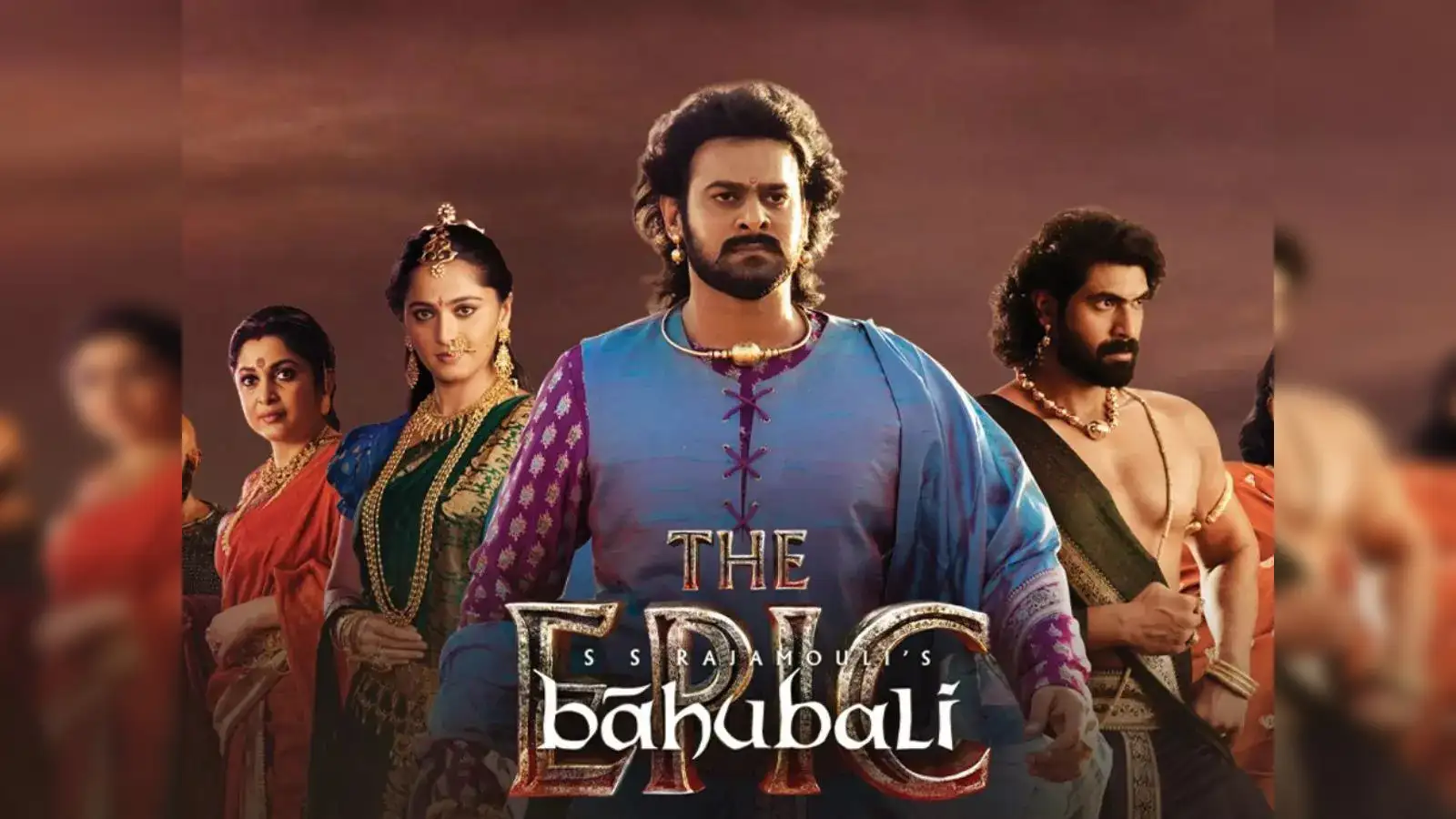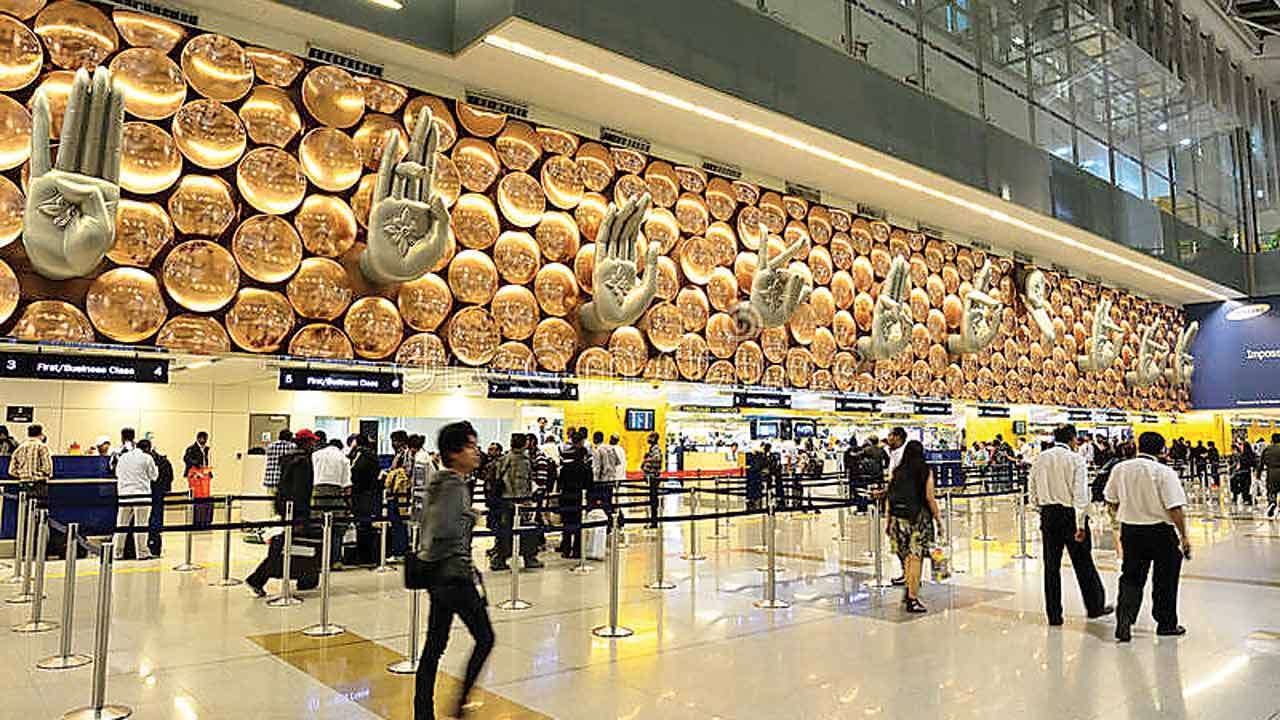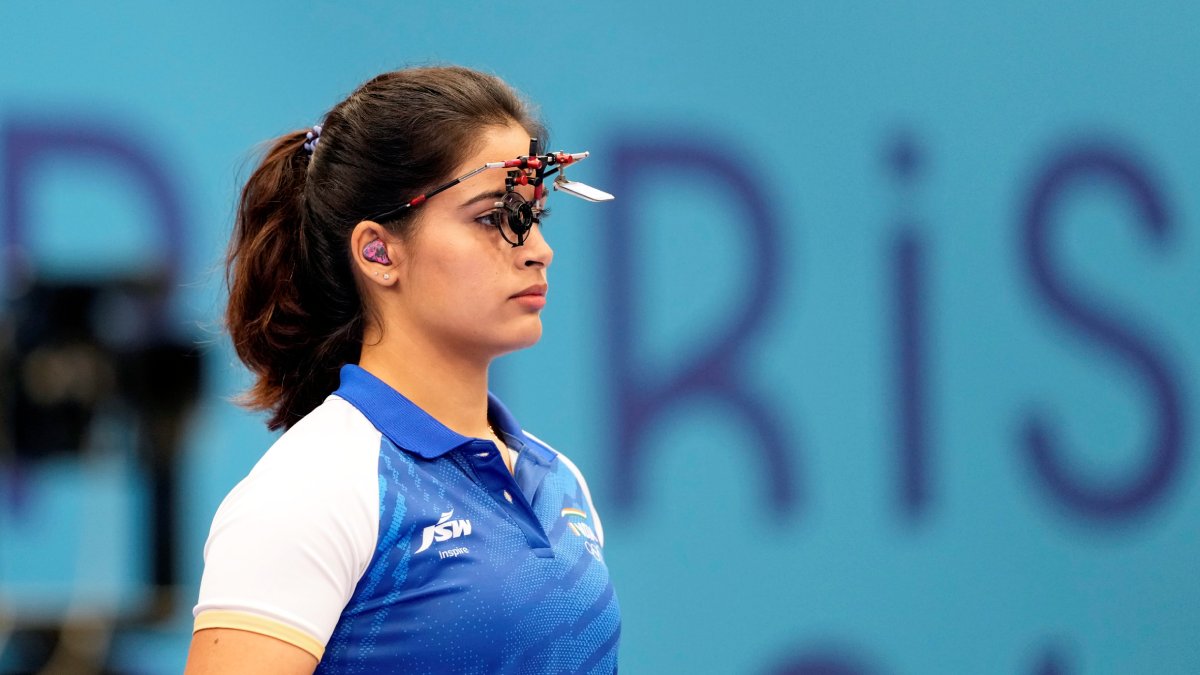The grandeur of Indian cinema found its defining moment when SS Rajamouli’s Baahubali series first hit theatres nearly a decade ago. Now, in 2025, the magic has returned — reimagined, refined, and reborn. The re-edited version titled Baahubali: The Epic has stormed the big screens again, reigniting the massive wave of excitement that once swept across India and beyond.
Released in select theatres across India and a few international markets, Baahubali: The Epic (Re-Edited Version) has grossed over ₹24 crore in its opening weekend, proving that the Baahubali phenomenon is far from fading. Directed by SS Rajamouli and headlined by Prabhas, Anushka Shetty, Rana Daggubati, and Tamannaah Bhatia, the remastered edition has captured the imagination of a new generation of moviegoers while reigniting nostalgia among long-time fans.
1. The Vision Behind the Re-Edited Release
When Rajamouli first unveiled Baahubali in 2015 and Baahubali 2: The Conclusion in 2017, the duology became a cultural event. The films redefined Indian cinema’s visual storytelling, breaking barriers in scale, emotion, and visual effects.
Now, with Baahubali: The Epic, Rajamouli wanted to craft a condensed, sharper, and visually elevated version that pays homage to the legacy while offering a cinematic upgrade. The new edition merges key sequences from both parts, presenting a seamless three-hour cinematic experience — giving audiences the essence of the saga without repetition.
It’s not just a re-release; it’s a recrafted cinematic event — with improved color grading, reworked background score, and enhanced sound through Dolby Atmos. For many fans, this release feels like rediscovering Baahubali for the first time.
2. Box Office Collection – Day-by-Day Breakdown
Trade analysts were initially cautious about expectations for a re-edited release. However, Baahubali: The Epic has defied industry predictions by pulling in large crowds.
Here’s the detailed box office breakdown for its opening weekend:
- Day 1 (Friday): ₹7.5 crore
The film opened to solid occupancy across southern states, especially in Andhra Pradesh, Telangana, and Tamil Nadu. Multiplex chains in Hyderabad reported over 80% occupancy. - Day 2 (Saturday): ₹8.1 crore
Word-of-mouth spread quickly, and family audiences joined in, driving up the collections. Shows in Bengaluru and Chennai were almost houseful. - Day 3 (Sunday): ₹8.6 crore
The weekend peak saw audiences queuing up for IMAX and 4K screens, with nostalgia driving ticket sales.
Total Weekend Gross (India): ₹24.2 crore
For a re-release, this figure is extraordinary. The film’s strong performance indicates that Baahubali’s legacy continues to command attention and admiration even after nearly a decade.
3. Why the Re-Edited Version Clicked with Audiences
The success of Baahubali: The Epic lies in its perfect blend of nostalgia and novelty. While longtime fans revisited the grandeur of Mahishmati, new audiences — especially younger Gen-Z moviegoers — experienced the visual marvel for the first time on the big screen.
Key reasons behind its success include:
- Cinematic Upgrades: Enhanced VFX, sharper color tones, and crisp sound design make it feel new.
- Compact Storytelling: The narrative now flows smoother, connecting key events from both films into a single, powerful journey.
- Emotional Recall: Iconic moments like Katappa’s betrayal or Sivagami’s sacrifice still evoke goosebumps.
- Cultural Pride: Audiences once again celebrate an Indian film that redefined global cinematic standards.
4. Audience Reactions – Nostalgia Meets Modernity
Social media platforms have been buzzing since the film’s re-release. Hashtags like #BaahubaliTheEpic and #JaiMahishmati have trended across X (formerly Twitter), Instagram, and YouTube.
Moviegoers shared emotional posts, selfies from theatres, and nostalgic tributes. Fans praised how the re-edited version maintained the essence while removing redundant parts, making it more gripping and accessible.
Younger audiences, many of whom were children during the original release, finally got to witness the spectacle in theatres — and their reactions have been overwhelmingly positive.
5. The Power of Prabhas – Still the Face of Indian Epic Cinema
Baahubali was the film that transformed Prabhas from a regional star into a pan-India phenomenon. Even years later, his commanding screen presence continues to draw audiences.
In Baahubali: The Epic, Prabhas’ portrayal of both Amarendra and Mahendra Baahubali once again mesmerizes viewers. His charisma, physicality, and emotional depth remain unmatched in the epic genre.
This re-release also comes at an interesting time — with Prabhas gearing up for his next big project, Kalki 2898 AD, alongside Deepika Padukone and Amitabh Bachchan. The ongoing success of Baahubali further cements his superstar status.
6. SS Rajamouli’s Genius – A Director Who Understands Timeless Cinema
SS Rajamouli has always been known for creating films that transcend language and geography. His re-editing of Baahubali shows not just perfectionism but also his deep understanding of storytelling rhythm.
Rather than a simple re-release, Rajamouli treated Baahubali: The Epic as an evolution — with modern sound mixing, improved CGI, and new transitions. This move reflects how he sees cinema as a living art form that can evolve with technology and audience sensibilities.
Moreover, the release timing — ahead of his upcoming Mahesh Babu-led global adventure film (SSMB29) — is a strategic masterstroke, reigniting excitement around Rajamouli’s cinematic universe.
7. The Technical Brilliance – A Feast for the Senses
Baahubali: The Epic (Re-Edited Version) is not merely a remastered print; it’s a complete technical transformation.
Key highlights:
- 4K Ultra HD Mastering: The visuals are cleaner and richer, enhancing the depth of battle scenes and landscapes.
- Dolby Atmos Sound: Re-engineered soundtracks bring a new level of immersion, particularly in war sequences.
- Enhanced VFX: Key CGI scenes — especially the waterfall introduction, Mahishmati kingdom, and the Kalakeya battle — have been polished to perfection.
- Reworked Background Score: MM Keeravani’s music has been subtly refreshed, making the emotional beats even more powerful.
The technical refinements elevate the overall cinematic experience, making this version feel more modern and international in quality.
8. Regional Performance – South India Leads the Charge
The film’s biggest success comes from South Indian markets, particularly:
- Andhra Pradesh & Telangana: ₹10 crore+ weekend gross
- Tamil Nadu: ₹4.2 crore
- Karnataka: ₹3.8 crore
- Kerala: ₹2.1 crore
These figures highlight how deeply Baahubali remains embedded in regional cinema culture. Multiplexes and single screens alike reported houseful shows, with several fan clubs organizing special screenings and celebrations.
9. Northern Markets and Hindi Belt Response
Interestingly, Baahubali: The Epic also performed strongly in Hindi-speaking regions. In Delhi, Mumbai, and Lucknow, theatres witnessed healthy footfalls despite multiple new releases. The Hindi dubbed version, already a household favorite from its TV runs, drew in audiences looking for the theatrical experience.
Its Hindi weekend gross crossed ₹3.5 crore, a strong showing for a re-release, reaffirming that Baahubali remains India’s most loved mythic saga.
10. Overseas Performance – A Global Wave of Nostalgia
Beyond Indian shores, Baahubali: The Epic has managed to strike a powerful emotional chord with international audiences. The re-edited version drew impressive numbers across key global markets, underscoring the franchise’s worldwide popularity.
In the United States, the film grossed an estimated ₹2.1 crore, followed by ₹0.7 crore in the United Kingdom. The UAE and Gulf regions contributed another ₹1.6 crore, while Australia and New Zealand together added around ₹0.6 crore to the tally.
This brings the film’s total overseas collection to nearly ₹5 crore, a strong performance for a re-release. Much of this success can be credited to the massive Indian diaspora and long-time fans who turned out to relive the cinematic grandeur. With select screenings held in IMAX and 4DX formats, international viewers were once again immersed in the breathtaking world of Mahishmati — this time with upgraded visuals and sound that made the experience feel brand new.
11. Comparison with Other Re-Releases
In recent years, several Indian classics have been re-released — including Gadar, DDLJ, and Titanic (3D remaster) — but few have matched Baahubali: The Epic in scale or box office response.
Unlike standard re-releases, Rajamouli’s version features substantial editing, making it feel like a new film rather than a re-run. This distinction is why audiences responded so enthusiastically.
Industry experts believe Baahubali has set a new benchmark for re-release success, showing that audiences will return to theatres if given a fresh experience with quality upgrades.
12. Marketing Strategy and Fan Engagement
The marketing for Baahubali: The Epic focused on nostalgia-driven digital campaigns. The film’s team launched a “Relive the Legend” campaign across social media, showcasing iconic moments with side-by-side clips of the upgraded visuals.
Additionally, fan events, limited-edition merchandise, and special screening invites for influencers helped create buzz before the release. The decision to screen it during the festive season further boosted audience turnout.
13. The Cultural Legacy of Baahubali
The Baahubali franchise is more than a film series — it’s a cultural landmark. It revolutionized Indian cinema’s approach to visual storytelling, VFX, and world-building.
Its impact can be seen in subsequent films like RRR, KGF, Pushpa, and Brahmastra, which drew inspiration from Rajamouli’s epic scale and emotional depth.
The re-edited release reinforces how Baahubali continues to define cinematic excellence — and remains a source of national pride.
14. What’s Next for the Baahubali Universe
The success of Baahubali: The Epic might just be the beginning of a revival wave for the franchise. The animated series Baahubali: Crown of Blood has been well received on streaming platforms, and discussions about expanding the universe through spin-offs or prequels are ongoing.
Industry insiders suggest that Rajamouli and producer Shobu Yarlagadda might consider a Baahubali prequel series exploring the early life of Amarendra Baahubali or the rise of Bhallaladeva.
15. Audience Demographics and Repeat Viewers
Theatres have reported diverse audience demographics. Families, young adults, and even teenagers filled cinema halls — a rare mix in today’s content-saturated market. Many viewers admitted to watching the re-edited version multiple times, citing the upgraded visuals and emotional intensity.
This pattern suggests that Baahubali remains a multi-generational phenomenon, capable of uniting different age groups under one cinematic experience.
16. Critics’ Response – Praising the Craft
Critics have largely applauded Baahubali: The Epic (Re-Edited Version) for its technical finesse and editing precision. Reviews highlight that the streamlined pacing enhances the emotional impact and makes the film more engaging.
Most reviewers agree that the re-release sets a benchmark for how Indian films should be preserved and revitalized, rather than simply re-screened.
17. Economic Impact on Theatres
Theatres across India benefited significantly from this release. With many cinemas still recovering from fluctuating attendance post-pandemic, Baahubali: The Epic offered a major boost.
Reports suggest that premium screens (IMAX, 4DX, and recliner formats) saw 90%+ occupancy rates, especially during the weekend, signaling how strong content can still drive theatrical revenue.
18. Comparison with the Original’s Legacy
When Baahubali: The Beginning released in 2015, it grossed ₹600 crore worldwide, followed by Baahubali 2: The Conclusion with ₹1,800 crore.
While Baahubali: The Epic isn’t competing with those numbers, its ₹24 crore weekend as a re-release showcases enduring demand. Few films in Indian history have aged so gracefully — both technically and emotionally.










